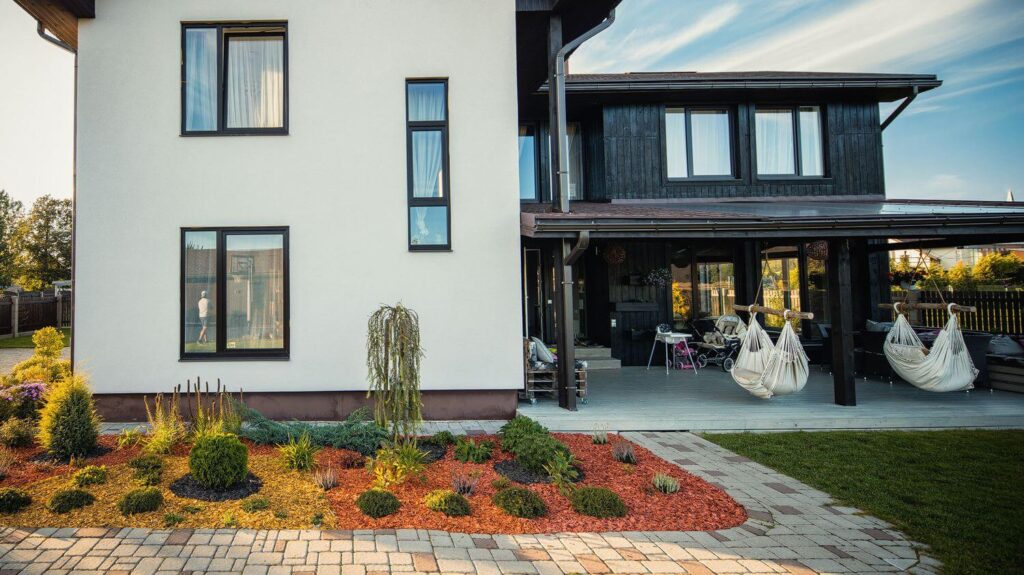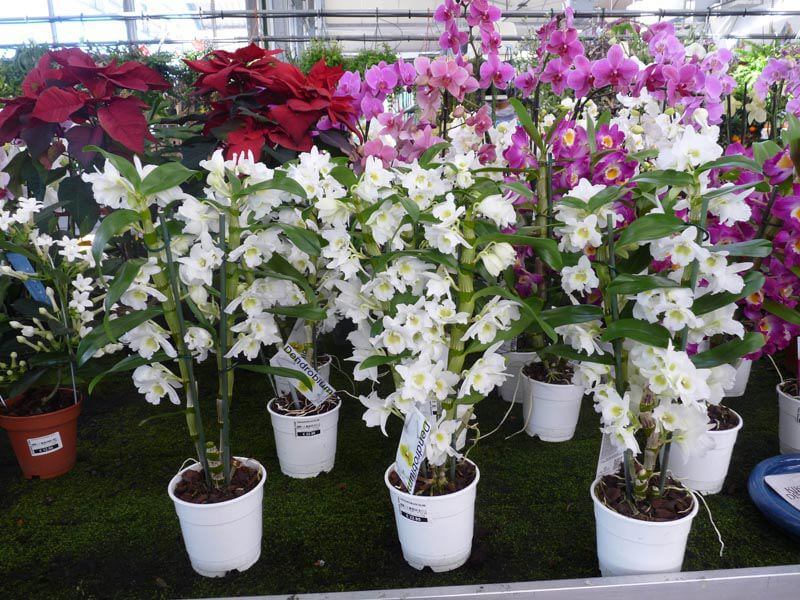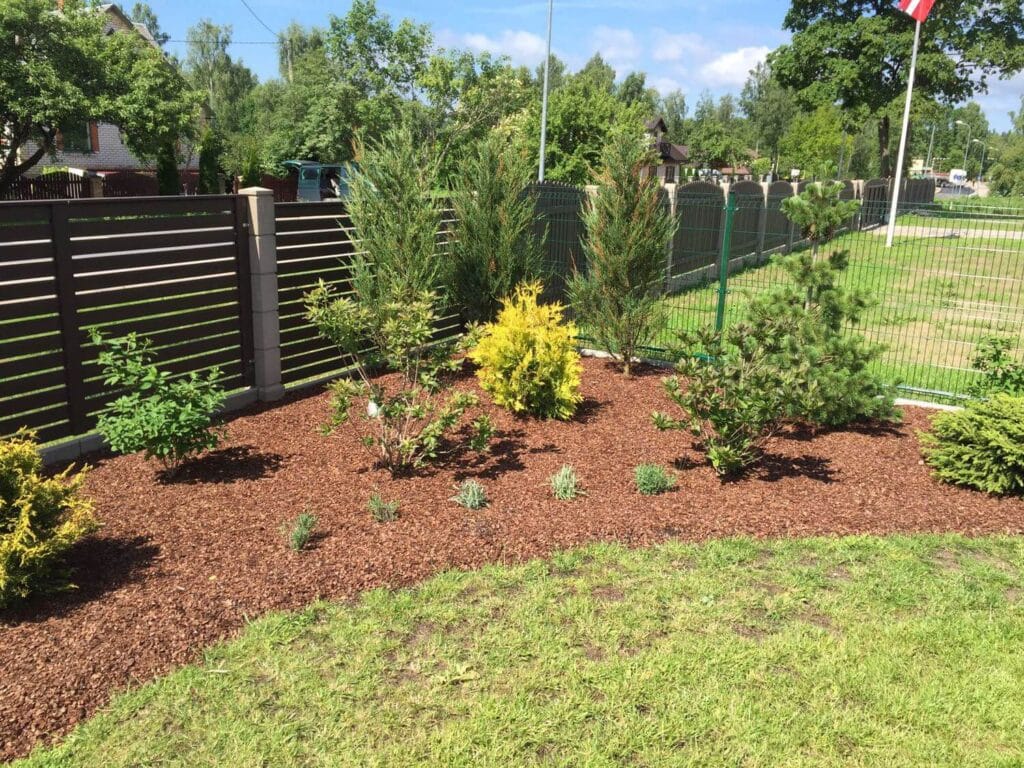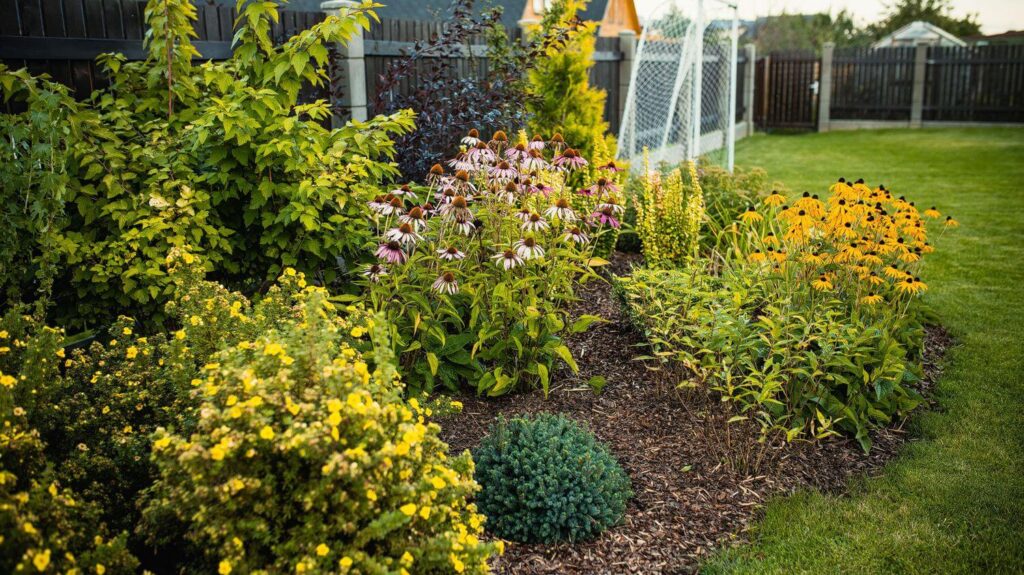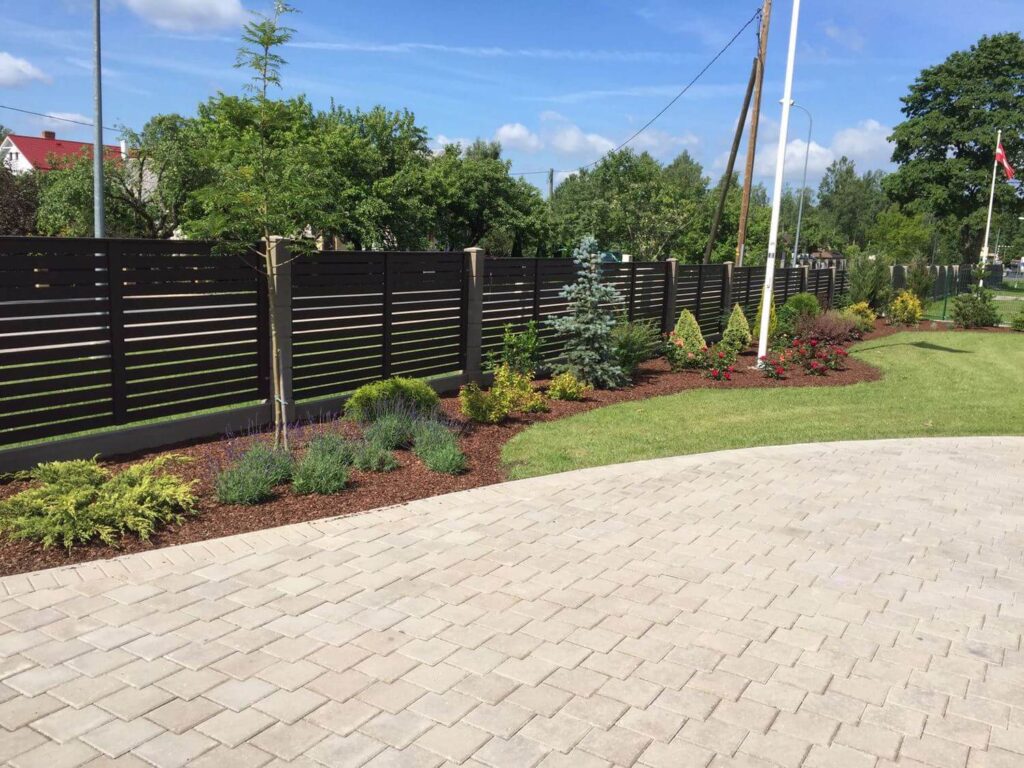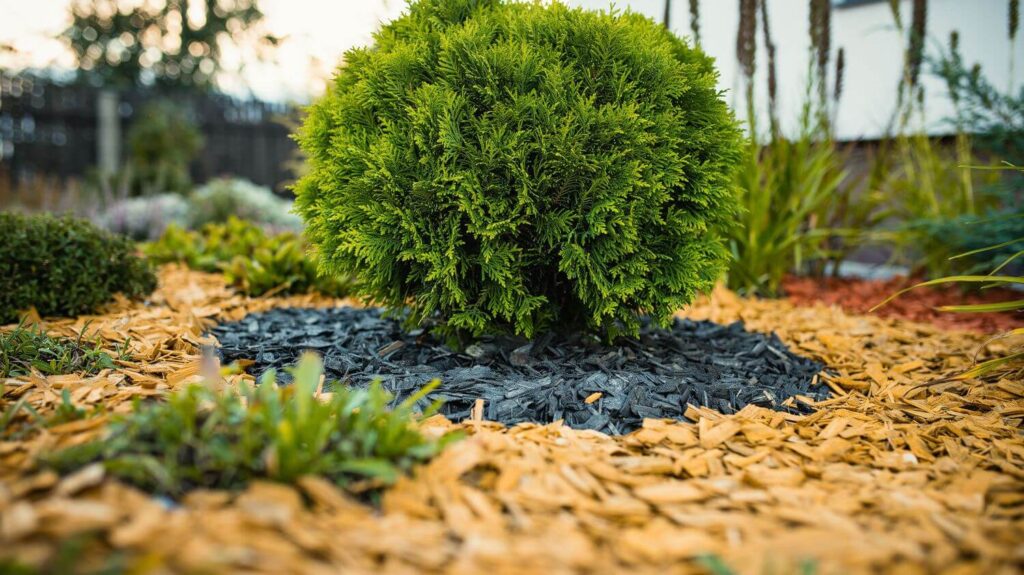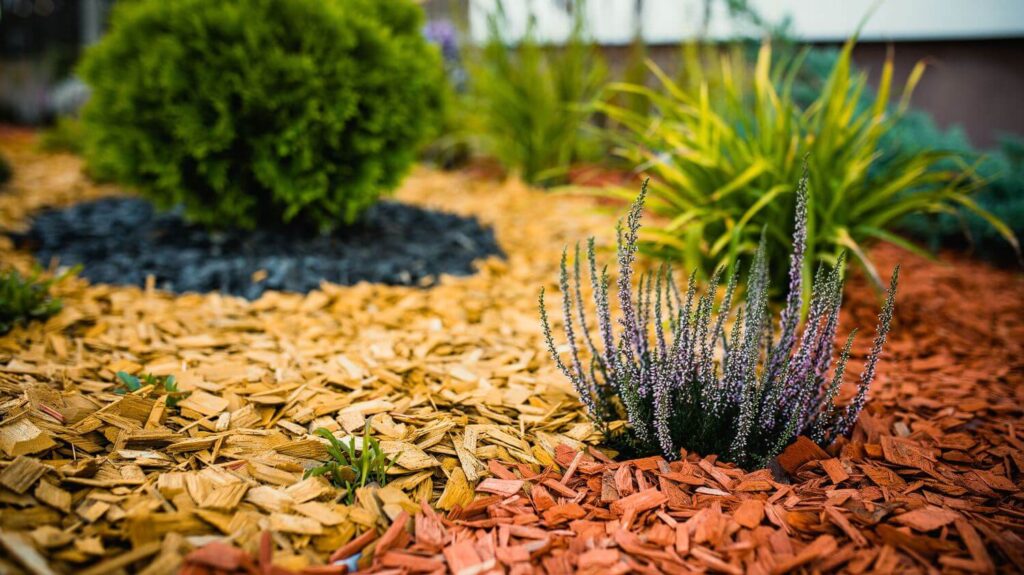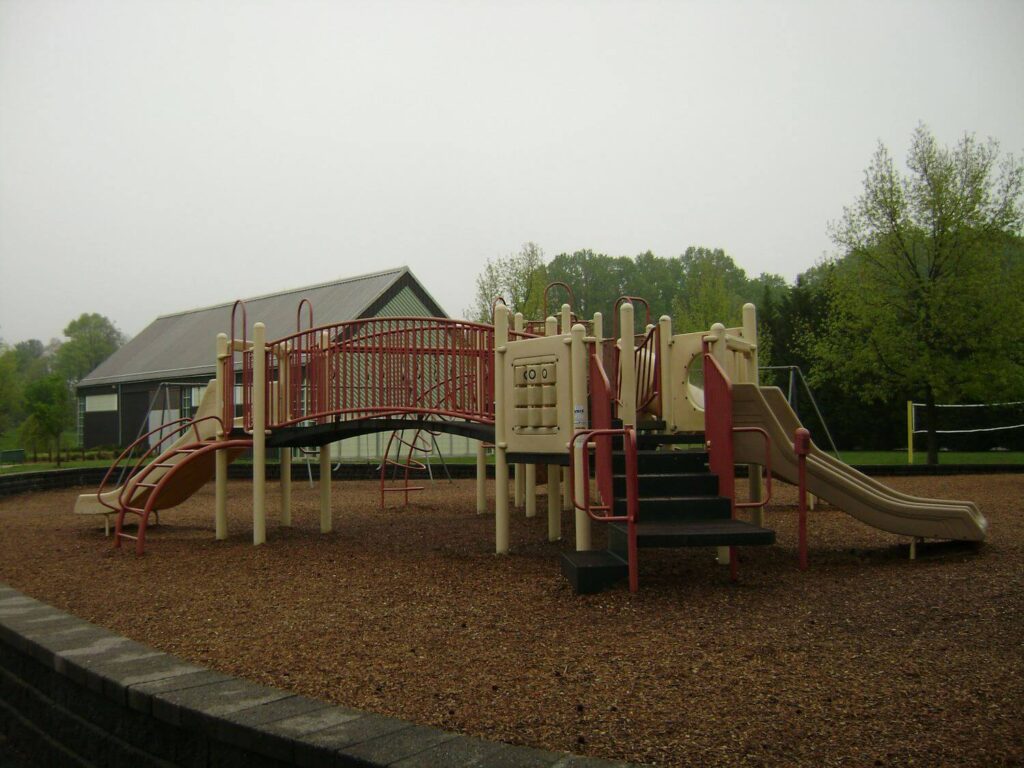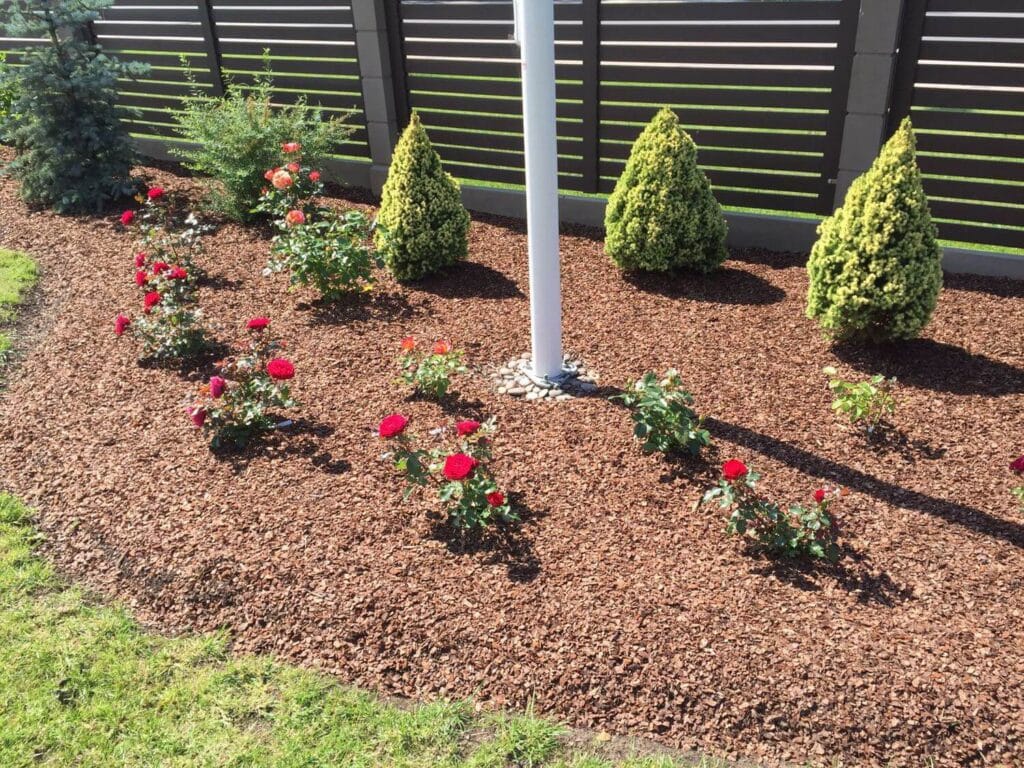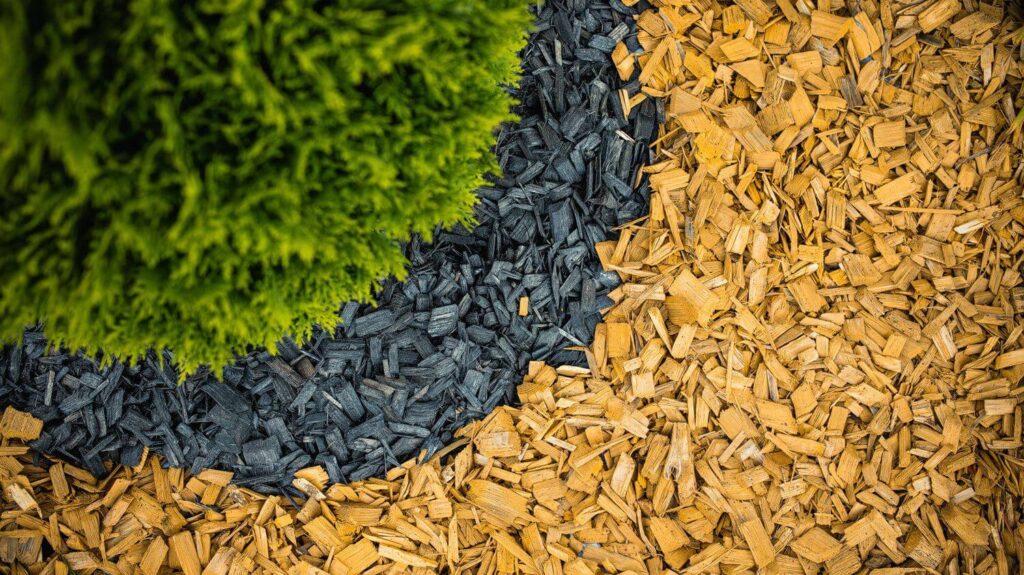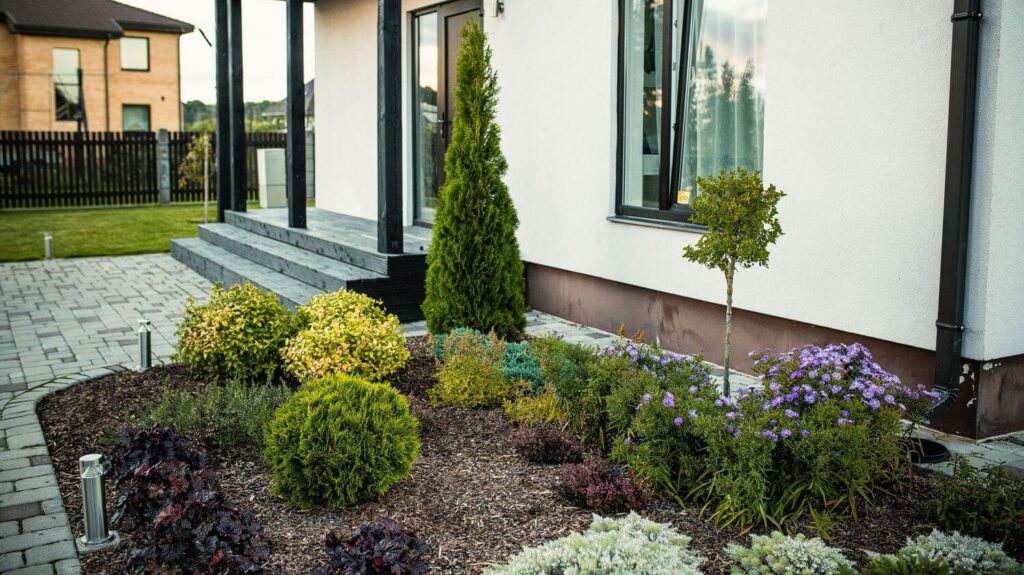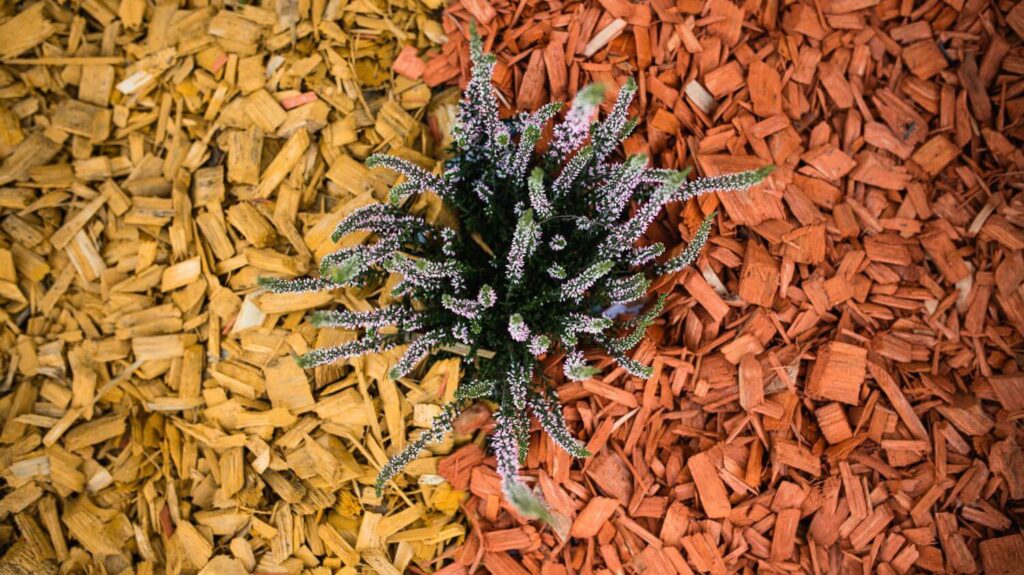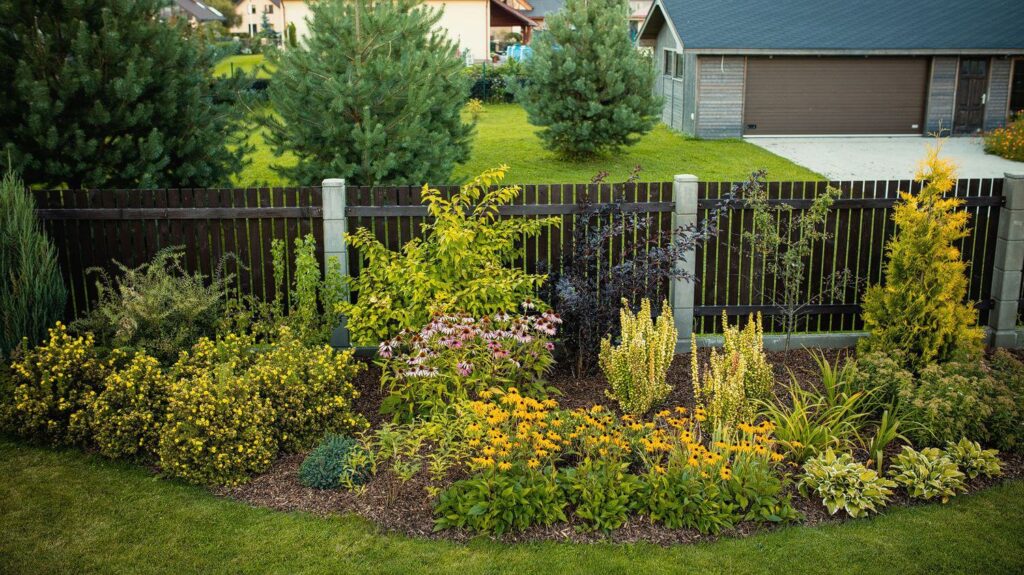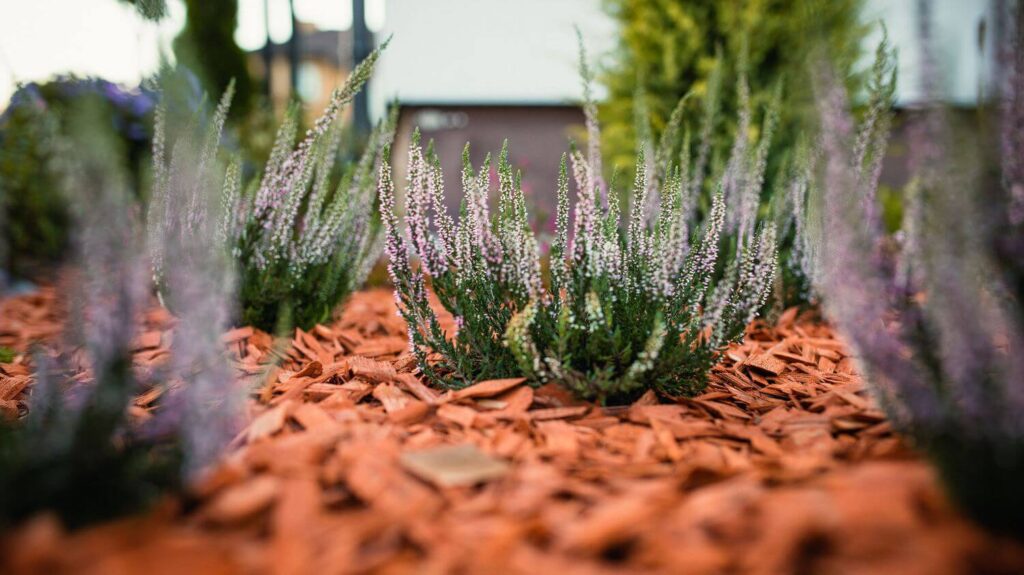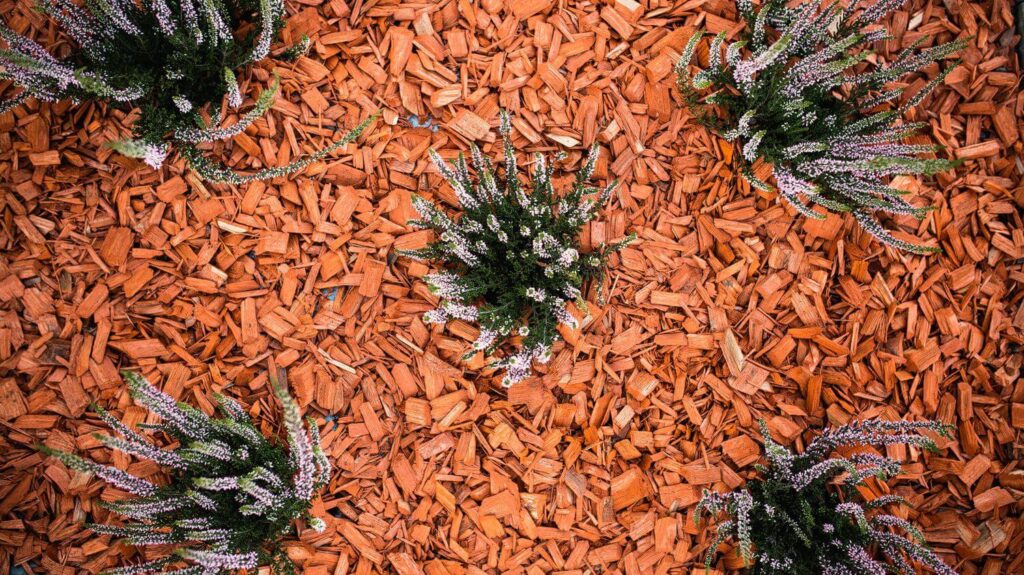What is mulch ?
Mulch is a specially prepared organic or inorganic material used to cover topsoil:
- around plants in beds and hollows;
- paving paths, playgrounds and trails
Mulch has both ornamental and practical functions, providing favourable growing conditions for plants and preventing weeds. Different types of mulch can be distinguished depending on the raw material and the structure of the material.
Organic mulches are plant-based materials that gradually decompose in the soil, returning organic matter to the soil and increasing its fertility. The most common organic mulching materials are tree bark mulch, wood chips, sawdust, pine cones, peat, compost, straw, leaves and grass clippings. Inorganic mulch, on the other hand, originates from inanimate nature and includes various stone coatings such as washed pebbles, gravel, decorative stones, clay fragments, brick and stone rubble, as well as synthetic materials such as agri-mesh, geotextiles and mulch films. Sometimes cut rubber or plastic mulch is also used in large vegetable farms, but this is considered harmful to the environment and therefore undesirable.
Each type of mulch has its own optimal use. For example, synthetic materials – agro nets, mulch films – are mainly used in production horticulture. They are effective in controlling weeds and retaining moisture for a long time, but are visually unattractive. Inorganic materials such as pebbles or decorative stones are also better suited to steep slopes where light organic mulch may not hold. However, unlike organic materials, they will have no practical role in enriching the soil.
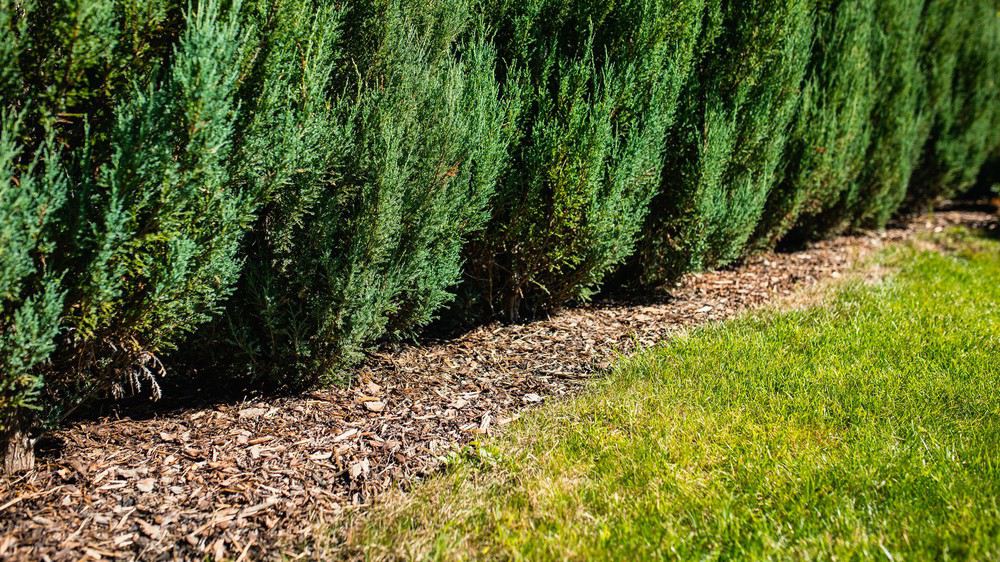
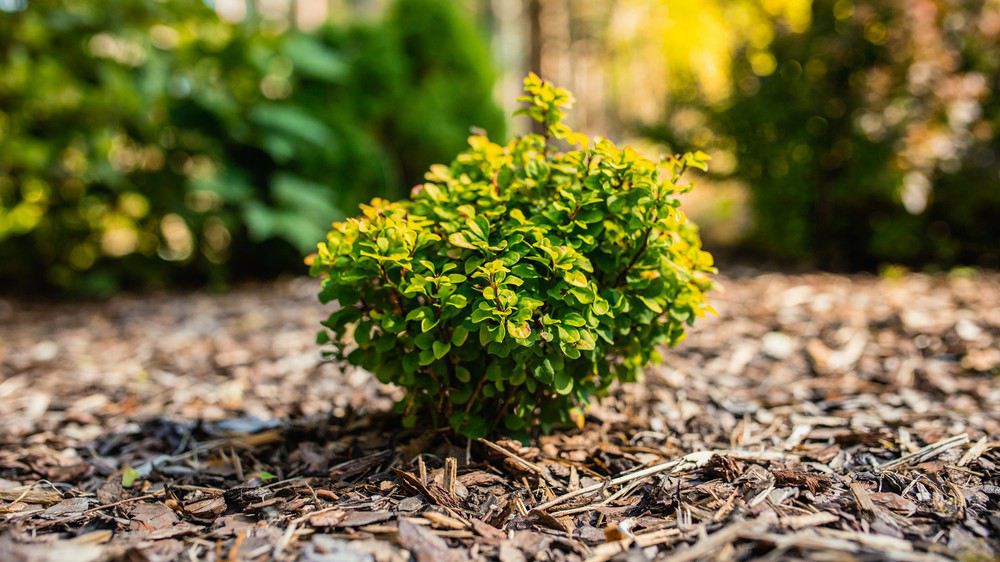
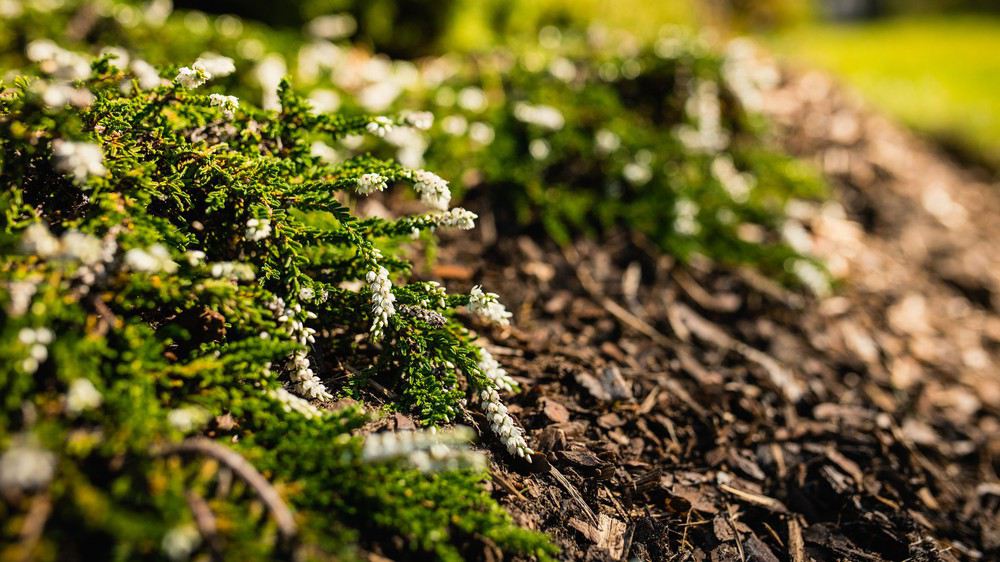
Organic mulches not only control weeds and conserve moisture, but also protect plant roots from temperature fluctuations and frost heaving and enrich the soil with humus. However, almost every organic mulching material has its pros and cons. For example, peat is ineffective in controlling weeds, but is useful in improving the soil and helps retain soil moisture if applied in a layer of at least 10-15 cm. Wood chips are a rather coarse material that decomposes much more slowly than bark mulch and often contain dyes, so they are usually used in small areas where a specific design effect is to be achieved by combining different colours. Sawdust is the cheapest, but also the least popular mulching material, as it compacts and prevents water from penetrating the soil, and consumes a lot of nitrogen as it decomposes. Grass clippings, straw, leaves are more practical than decorative mulch materials and are available seasonally. They can be spread under woody plants in autumn to enrich the soil with humus and protect the roots from freezing, but care must be taken to avoid contaminating the planting with weed seeds.
Pine bark mulch is the most popular and widely used organic mulching material due to its excellent decorative and practical properties. This mulch is made from shredded and screened pine bark and is available in three fractions: fine, medium and coarse. Pine bark mulch should be spread at least 5 cm thick and topped up by about 1 cm each year, as the mulch gradually loosens and settles into the soil Fine pine bark mulch is excellent for amending the soil – it helps to loosen the soil and ensures good air permeability.
Where is mulch used?
Mulch is used in ornamental horticulture – in kitchen gardens, parks, urban greenery, paths, playgrounds and trails – and in production agriculture – in tree and shrub gardens, fruit and berry orchards, perennial beds and root gardens. In beds covered with bark mulch, the topsoil does not need to be weeded or loosened. Indoors, mulch is used for planting plants and flowers in ornamental pots and boxes.
Depending on the mulching material chosen, mulch fulfils a whole range of practical and aesthetic functions. Pine bark mulch: inhibits weed growth;
- protects topsoil from erosion and leaching;
- retains moisture in the soil, preventing water loss through evaporation;
- creates a pleasant and stable microclimate for plants by reducing temperature fluctuations in the topsoil;
- protects plant roots from frost;
- promotes beneficial biochemical processes and micro-organisms
- replenishes humus in the soil by acting as a fertiliser;
- helps maintain soil looseness and build good soil structure;
- promotes the development of the plant’s root system;
- significantly reduces the time spent on maintenance and improves the appearance of green spaces.
